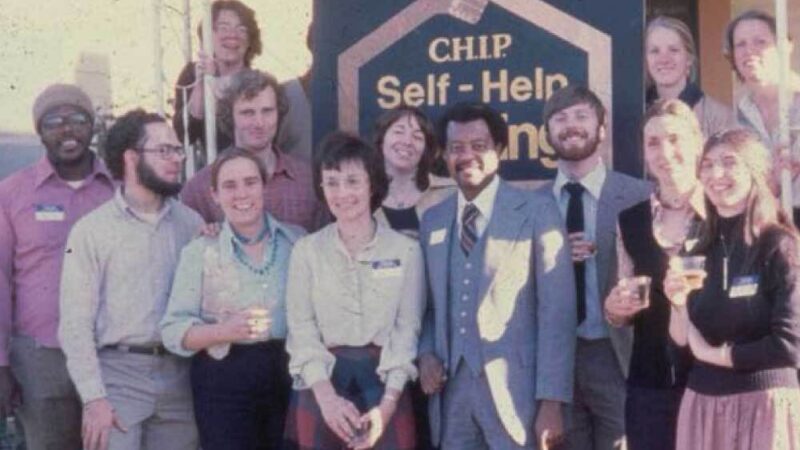
CHIP Turns 50: 50 years, thousands of homes, countless hope.
For 50 years, the Community Housing Improvement Project has helped create affordable housing opportunities in Chico and the surrounding counties with one common factor across the motivation, work, and people—it’s plain neighborly.
The impetus and first project for CHIP’s formation in 1973 was rehabbing dilapidated homes in areas south of CSU–Chico, where the founders were enrolled.
“A lot of those houses were occupied by women who were raising children by themselves or seniors,” says Fran Wagstaff, who was one of CHIP’s first volunteers before running the organization, beginning in 1974. “They didn’t have the means or the money to fix these houses.”
Wagstaff recalls that an employee from the college’s construction management program supervised the repair work by volunteers largely consisting of college students, veterans returning from the Vietnam War, people assigned to community service, and women.
“It was the years of the Women’s Movement,” Wagstaff says, “and women wanted to get into non-traditional jobs and learn skills that’d pay more than the crappy jobs they were getting.”
In the early days, Wagstaff recalls that about half the crew were women. And while some workers received a small stipend from federal programs, the organization relied mostly on spare change and donated materials.
“You can’t imagine how little money there was to run the place,” Wagstaff says.
Still, the program was a success and grew to meet the changing needs of the community.
“It became obvious, the need went beyond houses falling apart around their ears,” Wagstaff says. “People who were renting were really strapped.”
In response, in 1979, CHIP partnered with the Berkeley-based nonprofit Community Economics for guidance and funding to form the Multi-Family Housing Program, which continues today.
A few years later, CHIP formed the Self-Help Housing Program in cooperation with USDA Rural Development. Using sweat equity to decrease the cost and open doors for first-time homeowners, the program has helped build more than 2,000 homes since 1981.
After Wagstaff left CHIP in 1982—to continue her work in the Bay Area before retiring in 2009—new programs were created, while changing costs and needs moved the projects from urban areas into the surrounding rural counties.
In 2003, CHIP formed a Resident Services program that brought community events and educational, social and fitness classes into the rental units they owned.
“The cool thing about CHIP is we adapt,” says Seana O’Shaughnessy, CHIP’s President and CEO since 2019. “We’re truly grassroots and we fit into the community to truly support the communities’ needs.”
An example? “After the Camp Fire,” O’Shaughnessy says, “we learned a lot about building resiliently and how to support families that are returning and want to repopulate.”
Rebuilding from scratch in Magalia, for example, CHIP’s upcoming 64-unit property is designed with community input to provide walkable access to transportation and amenities.
Additionally, CHIP has two additional 70-unit properties in Paradise—one devoted to seniors—opening in the next few years as the demand for affordable housing only grows. It’s typical, O’Shaughnessy says, for CHIP to receive 10 times more applications than the number of units available.
Beyond new rental properties, O’Shaughnessy says CHIP’s future focus is on handling rising construction and insurance costs, expanding Resident Services, and adding more permanent supportive housing opportunities for residents who need additional support—such as case management or mental or physical health services.
O’Shaughnessy says CHIP has long leveraged partnerships with government, private and nonprofit organizations to provide services and run successful programs. But she believes an individual who is supportive of CHIP housing in their neighborhood can have an even bigger impact.
“There are still misapprehensions about who lives in affordable housing,” O’Shaughnessy says, “that it’s criminals or undesirables. But when people share their experiences, it helps educate people. ‘Oh, it’s my neighbor or my aunt, uncle or cousin who benefits from these type of houses.’”
It’s that understanding and empathy that both O’Shaughnessy and Wagstaff believe has fueled CHIP’s success for 50 years.
“Basically, accepting people where they are and kindness for the people who need the help and also for the people participating.” Wagstaff says. “It’s basically, neighbors helping neighbors.”
Story written by Matthew Craggs through the Chico News & Review.


